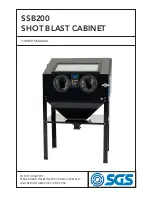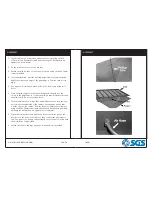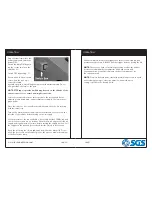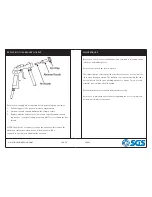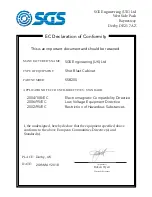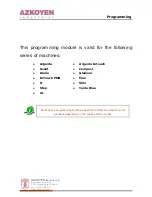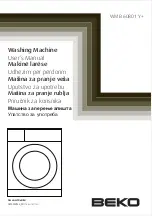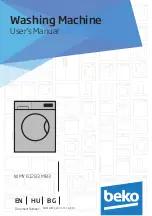
PAGE 7
PAGE 6
OPERATION
Plug the transformer into the
power supply and switch the
power ON.
Switch the lamp ON by push-
ing the rocker switch on the
switch box ‘I’.
Switch OFF by pushing ‘O’.
Ensure all air connections are
secure, and the pick up is
correctly located
beneath the grid, before filling the cabinet with abrasive media. Do not
fill higher than the level of the grid.
NOTE: PTFE tape is provided which may be used on the threads of the
various connectors to ensure an airtight connection.
Select the ceramic abrasive nozzle to produce the jet required for the
abrasive media being used, and assemble according to the instructions
given below.
Place the object to be cleaned in the cabinet, and close the lid, securing
with the swivel clip.
Turn on the extraction device which must be attached to the port on the
left side of the cabinet before turning on the air supply.
Set the pressure to the required value, but not higher than 100lbf/in2, and
check to ensure there are no air leaks. Should there be any, turn off the air
supply and repair where necessary, before turning the supply back on. Pull
the trigger on the gun and proceed to blast the object to be cleaned.
Keep the jet facing the object and away from the clear plastic lid. Do not
allow the jet to train on the rubber gloves, the air hose within the cabinet
or the fluorescent lamp.
OPERATION
When completed, release the trigger then turn off the air supply. As a
precautionary measure, ALWAYS pull the trigger before opening the lid.
NOTE:
There are no hard or fast rules governing nozzle sizes and air
pressures used with different abrasives. With experience and
experimentation you will quickly learn the best combinations for
the required result.
NOTE:
On more delicate parts, start with minimal air pressure to avoid
unnecessary peaning or excessive abrasion, and work up to a
setting to produce the desired finish.
WWW.SGS-ENGINEERING.COM

